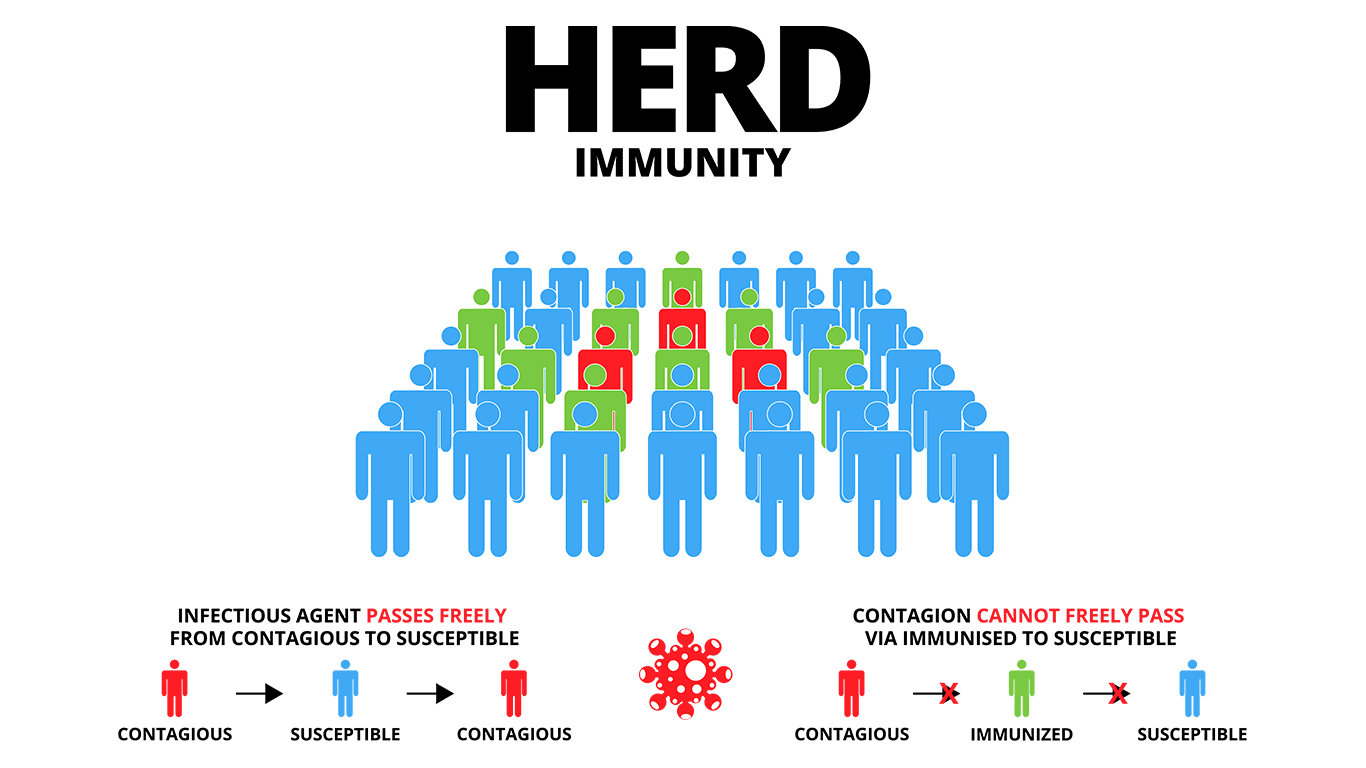How Vaccines Work
- Category: Health & Wellness, Infection Prevention
- Posted On:
- Written By: LVMC

Vaccines are essential to achieving herd immunity and can protect people of all ages against dangerous, deadly, and contagious diseases and infections.
Vaccines have been used in the U.S. for nearly a century and are proven effective at preventing highly contagious and potentially deadly diseases. Vaccines protect against a number of infections and work by helping your body develop immunity so you can effectively fight off illness and stay healthy. Most vaccines are given before the age of two years, though people can continue receiving vaccines and boosters throughout adulthood.
Read on to learn more about how vaccines work, and how Lompoc Valley Medical Center can help you and your family stay on top of the recommended vaccine schedule and face a reduced risk for illness and disease.
Why Are Vaccines Important?
Vaccines can protect you from serious, debilitating diseases that were once common in the U.S. but are no longer widespread thanks to vaccination. Many of the diseases for which vaccines are available can be extremely difficult to treat, and some cannot be cured. Therefore, prevention with vaccines is often the most effective way to protect our bodies and avoid disease.
Before vaccines, people had to rely completely on their immune systems to protect them against illness and disease. However, factors such as genetics, medical conditions, and malnutrition made large numbers of people highly susceptible to weakened immune systems and crippling diseases that affected them for life.
For instance, the CDC reports that before polio vaccines were available in the U.S., polio—a highly contagious virus that affects the brain and spinal cord to cause paralysis—resulted in more than 15,000 cases of paralysis every year. Thanks to the creation and widespread availability of the polio vaccine, there have been no documented cases of polio in the U.S. since 1979.
How Do Vaccines Generally Work?
Vaccines contain the same molecules (antigens) that cause the diseases for which they’re being used to prevent. The antigens in vaccines are either dead or extremely weakened to prevent them from causing disease, but are strong enough to trigger the immune system to produce antibodies that eventually lead to immunity against that disease. For example, if a person is exposed to chickenpox after getting the vaccine, that person’s body will recognize the antigens and fight off the disease without suffering symptoms or illness.
Our immune systems work similarly to vaccines in how they produce antibodies to fight off illness and disease. Sometimes the immune system fails to work as quickly as needed to prevent disease, and results in that person becoming sick. After the body recovers, the immune system remembers that antigen and can effectively fight it off when exposed to that disease in the future. However, some diseases create lasting or permanent effects (such as paralysis from polio), that cannot be reversed even after a person has recovered from acute symptoms. Vaccines work as an extra safety net to protect people from these harmful diseases when their immune systems cannot effectively fight them off on their own.
How Do Different Types Of Vaccines Work?
There are five different types of vaccines: live, attenuated vaccines; inactivated vaccines; toxoid vaccines; subunit vaccines; and conjugate vaccines. Each of these vaccine types works in different ways to protect people against diseases.
Live, Attenuated Vaccines
These vaccines contain a live, weakened version of the virus or bacteria for which they are made to prevent. Live vaccines are closer to a natural infection than any other type of vaccine, and are highly effective at training the immune system to fend off disease. Chickenpox, measles, and mumps are examples of live, attenuated vaccines. If you or your child has a weakened immune system due to a health condition or from receiving chemotherapy, consult with your doctor before getting a live vaccine.
Inactivated Vaccines
Inactivated vaccines contain dead bacteria and pathogens from the diseases they are intended to prevent. These vaccines produce unique immune responses and can help the immune system learn how to fight live versions despite containing dead pathogens. Inactivated vaccines are usually given in multiple doses over time to help build and maintain long-lasting immunity.
Toxoid Vaccines
These vaccines protect against diseases caused by bacteria that create toxins in the body. The toxins added to these vaccines are weakened to prevent illness and are known as toxoids. Toxoid vaccines such as the tetanus vaccine help the immune system learn how to fend off natural toxins.
Subunit Vaccines
Subunit vaccines contain only essential parts (subunits) of the virus or bacteria as opposed to all the antigens that make up the harmful germ. As a result, subunit vaccines are associated with fewer side effects. The hepatitis B and whooping cough vaccines are examples of subunit vaccines.
Conjugate Vaccines
Conjugate vaccines fight bacteria that have antigens coated with sugar-like substances called polysaccharides. Polysaccharides disguise antigens in ways that make it difficult for weakened or young immune systems to recognize and respond to the antigens. Conjugate vaccines combine polysaccharides with stronger antigens to help the immune system develop a response powerful enough to fight the disease.
What is Herd Immunity?
Herd immunity occurs when a certain percentage of a population becomes immune to a disease on behalf of receiving a vaccine or being directly exposed to the disease. When herd immunity is achieved in a particular population, the spread of disease becomes greatly limited. People in that population who haven’t been vaccinated or who haven’t fallen ill are often far less likely to become infected.

Herd immunity can greatly benefit communities, as it helps protect those who cannot be vaccinated due to age or certain medical conditions. According to a paper published in the Journal of the American Medical Association, vaccination can help populations achieve herd immunity without everyone having to contract the infectious disease. Getting sick and recovering from a disease can also contribute to herd immunity on behalf of antibody protection, but could still potentially result in serious complications including death.
Vaccines are usually the fastest way to achieve herd immunity in a population and protect vulnerable people who cannot be vaccinated for various reasons.
What is the Recommended Vaccine Schedule?
In the U.S., vaccines are given starting at birth, and can be given to adults throughout their entire lives. Most vaccines require more than one dose or boosters to benefit from the strongest possible immune response. Immunity from vaccines gradually wears off, which is why children and adults are often encouraged to stay up to date on vaccines and boosters.
Newborn babies usually receive the hepatitis B vaccine before leaving the hospital, then receive a second dose of hepatitis B along with the polio, rotavirus, pneumococcal, Haemophilus influenzae type b (Hib), and whooping cough vaccines at one to two months of age. Babies receive another dose of the same vaccines at four and six months, and can start receiving annual flu shots starting at six months. Children and adults may receive boosters and annual flu vaccines every year thereafter.
The CDC maintains an updated schedule of recommended vaccines for infants, children, adolescents, and adults. Your doctor can also work with you and your family to help you stay on top of vaccines and boosters.
What Are Side Effects of Vaccines?
Side effects from vaccines are usually mild and resolve on their own shortly after receiving the injection. Serious side effects are extremely rare, and may only affect one to two adults for every one million vaccine doses given, according to the U.S. Department of Health and Human Services.
The most common side effect of vaccines is a reaction at the injection site, which may include redness, swelling, and pain. Other common side effects include mild fever, chills, headache, tiredness, and muscle and joint aches. Some people may faint within minutes after getting a vaccine.
Some vaccines may produce side effects that are specific to that particular vaccine. For instance, the CDC reports that the rotavirus vaccine may cause temporary diarrhea or a serious type of bowel blockage called intussusception. The mumps vaccine may cause seizures or temporary low-platelet count.
Talk to your doctor if you are concerned about experiencing side effects from vaccines. In most cases, the benefits of vaccines far outweigh potential risks. Your doctor can perform an evaluation and determine whether certain vaccines can increase your risk of side effects.
Who Should Not Get Vaccines?
Certain vaccines may not be safe for some people on behalf of factors such as age, medical conditions, and known allergies. People who experience an allergic reaction after receiving a vaccine should avoid getting additional doses and boosters of that same vaccine in the future. Children and adults who recently recovered from a serious illness may want to put off receiving vaccines until their immune systems are stronger. Women who are pregnant should not get the HPV vaccine during pregnancy due to lack of safety and efficacy data in this population, reports the New York Department of Health.
If you have any known allergies or medical conditions, mention these to your doctor before receiving any vaccines. Your doctor can also review your medical history and recommend vaccines accordingly.
What to Do Next if You Need a Vaccine
Lompoc Valley Medical Center offers vaccines to people of all ages, including the annual flu vaccine for people aged six months and older. Visit our provider page to make an appointment with one of our doctors who can help you and your family stay up to date on recommended vaccines.






.jpg)